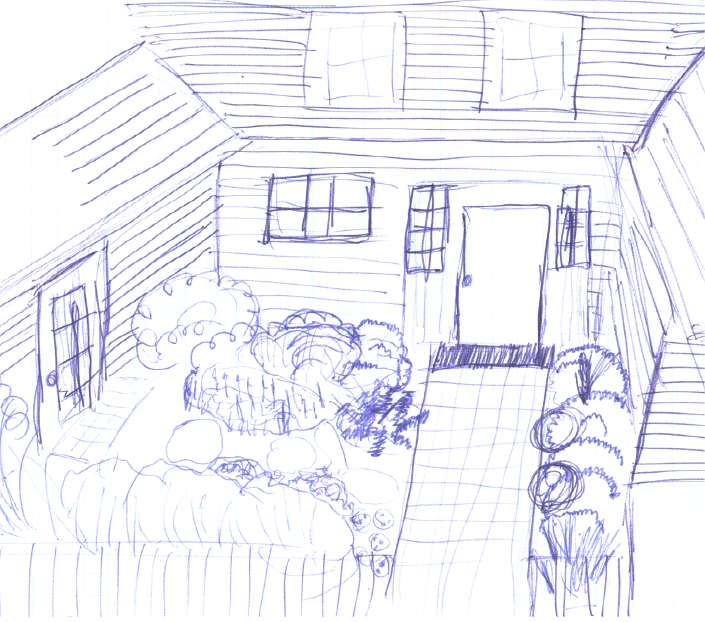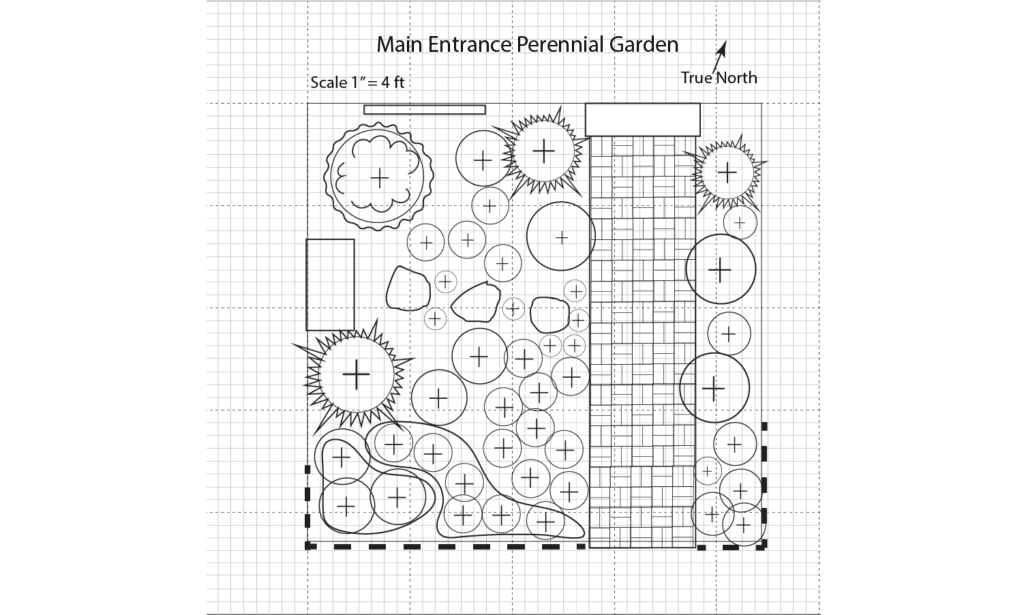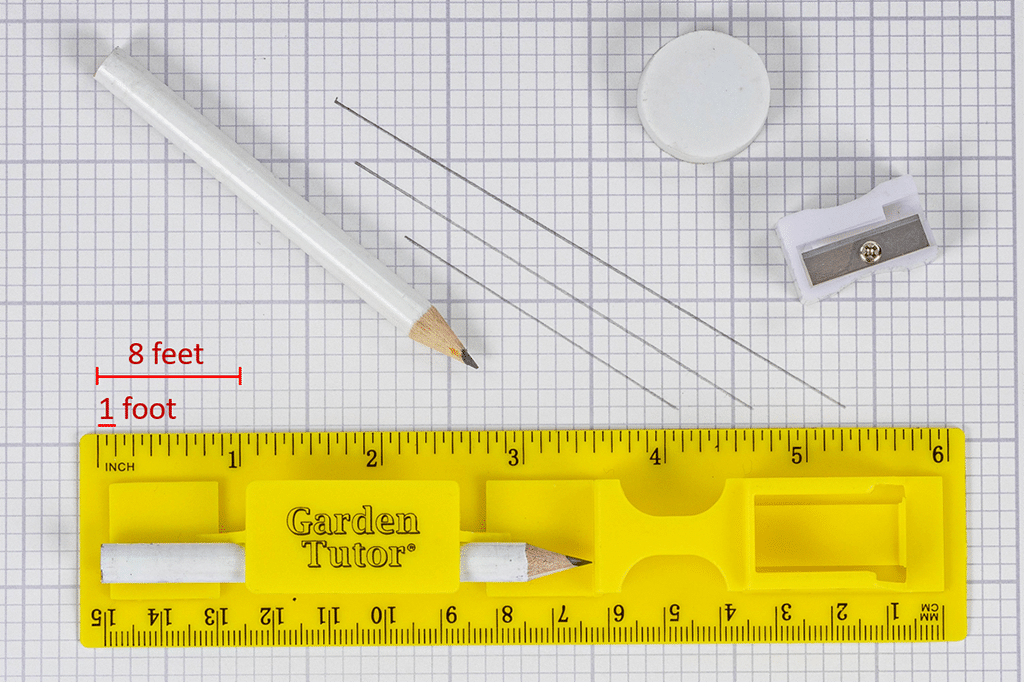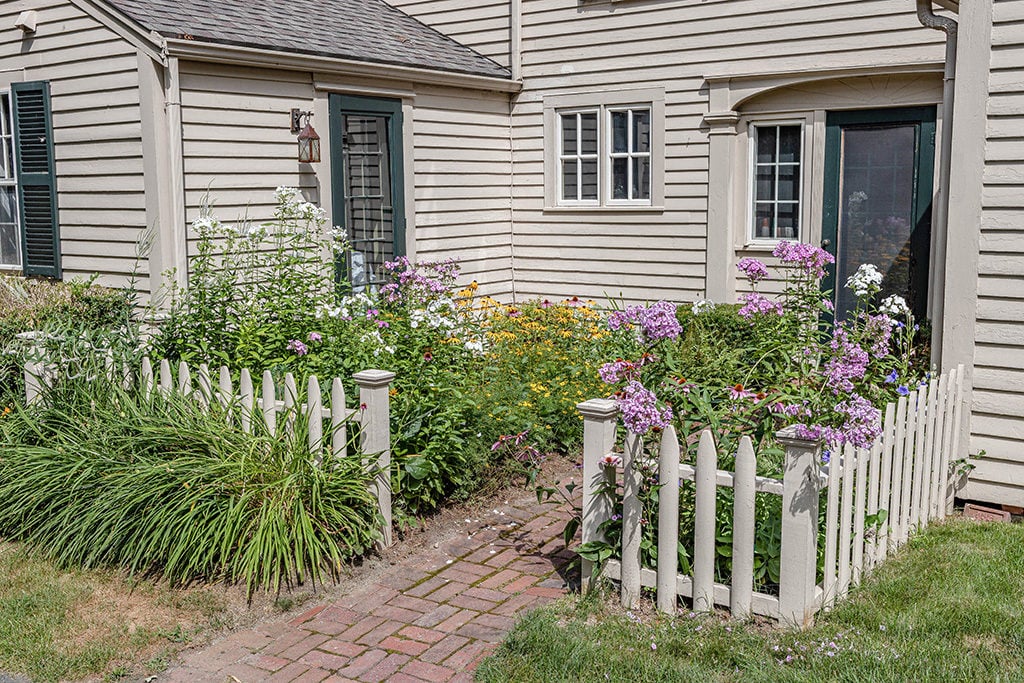How To Draw A Garden Map
Up to now we have discussed principles and techniques for evaluating your site, designing gardens, and selecting plants. In this module we take upwards the procedure of actually creating your garden. The following steps should get you started:
- Decide the conditions in your garden site past doing site analysis. Compile a list of your site constraints.
- Sit down and remember about your wants and other constraints.
Recall well-nigh your wants:
Do you want to heighten a view or terrain characteristic? Do you desire a colorful garden or peradventure a garden that is relatively free of maintenance? Practice y'all want an in-ground watering organization? What existing features do you want to contain into the blueprint? Which existing features exercise you want to go rid of? (The list goes on.)
Think nigh your constraints:
What are your site atmospheric condition (your biggest and most important set of constraints)? What can y'all afford? How much fourth dimension and effort can you afford to invest? Do you need to get e.1000. a lawnmower to the site? (y'all'll need access, storage) Can you achieve the site with a garden hose? (plants need water) Can you maintain the site? (complex gardens need a lot of maintenance) Is there some future projection that has to be incorporated into the blueprint? (similar a pool, deck, gazebo, etc.) These are just a few possible constraints.
3. Wait at the existing atmospheric condition and determine what stays and what goes. You may just desire to add together a few perennials, or fifty-fifty totally change the site from the ground upwards. If you lot make up one's mind to remove a lot of existing features—specially copse—consider the effect such a removal will have on your site conditions.

4. Now is a good time to brand a simple sketch of the proposed garden. The get-go thing yous should practice earlier yous beginning your sketch is to apply your compass to determine True North so yous can accurately marking and orient your garden. Your next step is to draw a rough sketch of your design and develop your theme. Practice your best, you lot practise not demand to be an artist as our sample sketch illustrates. Once your crude sketch is complete, retrieve of how you lot desire to arrange things, and which plants you desire to use.

5. Initially, when you lot are planning a garden project, simply do a rough sketch of the program to brainstorm to work out your ideas. For many gardeners a rough sketch is all they ever demand, particularly for simple projects. For new gardeners it may exist helpful, one time you have a solid concept program in place, to make a formal garden design that is drawn to scale. A calibration cartoon will deed every bit a guide to use as yous install your garden and help you make solid estimates of the number of plants needed for your garden. The key to making a scale drawing is to catechumen existent-world measurements from your garden to a much smaller format that you lot tin can put onto a piece of paper.

To practise this, your start step is to measure your bodily garden site using the included Garden Tutor measuring tape. If your proposed garden site is large, then y'all may need to use a tape measure that is longer than your 5 human foot measuring tape. Add these measurements on your rough sketch.

While there are many scales you tin can use, one of the easiest is, 1/eight inch = 1 foot (i": 8'). By using this scale each 1/8 of an inch segment on your Garden Tutor ruler is equal to one human foot, and then i inch on your ruler is equal to 8 anxiety. This is a perfect scale to apply with your Garden Tutor drafting tools and measuring tape. In improver, we have adult custom garden design graph newspaper that is set up using a ⅛" scale. It is available in the "Toolbox" area of the Garden Tutor site nether "Garden Design and Layout". All you take to do is download and print a copy and y'all will exist ready to create a scale drawing. If you take a smaller garden and want to increment the scale y'all can arrange your scale to something like 1/4" Scale whereby 1" = 4ft. And so on the Garden Tutor Drafting paper 2 minor squares = 1/4" which is equal to 1 foot.
After setting your scale and drawing your garden beds y'all can brainstorm to add the plants. Design the garden with the plants mature sizes in mind (often plant on plant labels or horticultural sites that particular individual plants) and brand certain to follow the same calibration you are using for the garden bed.


In your Garden Tutor kit nosotros provide a circle template that is designed to help you depict individual plants in your garden. Once you accept found the right sized circle to use you lot can create various plant symbols. The circles yous depict with the circle template tin exist stylized to further identify the plants by blazon such as evergreen or deciduous or to show if they are new or existing plants. The "Garden Design and Layout" area nether the "Toolbox" menu provides a list of common symbols that you can use.

Some other approach for groups or masses of plants is to describe the individual plants equally elementary overlapping circles so outline the group or mass and stylize information technology as a whole. There are many ways to build and stylize your garden design and it is really up to you how detailed y'all want to make it. Some gardeners use color pencils, design beautiful landscape symbols, use tracing newspaper to create a final line free design, and turn the blueprint itself into a piece of work of fine art suitable for framing. Others only make a unproblematic sketch with a serial of freeform bubbling to correspond diverse planting groups with a few individual plants highlighted as needed.


vi. Once you have a rough sketch or a formal design, y'all will want to create a key so that you can label the unlike symbols and other features of the garden. Often it is easiest just to use numbers on the design then create a key on a split piece of paper that lists the establish names that represent to each number on the program. Using a split up establish list is too helpful if you lot want to make changes to the plants you select.

7. At this point you will need to calculate the number of plants you need. You can practice this past referring to your scale drawing and adding upwards all the plants listed. If you did not make a scale drawing you lot tin can measure out the bodily planting locations in your site based on the establish spacing requirements and mature size calculations. Put stakes where each plant should get and count the stakes.
If you are an experienced gardener, yous can walk through the garden site and estimate the number of plants y'all'll need past visualizing them in mature class.

8. Finalize your programme and make sure you've satisfied all of your wants and constraints. Double check placements and make any concluding-minute changes in your pattern.
9. Prepare the site (next module) and buy your plants.

Source: https://gardentutor.com/modules/design-how-to-layout-a-garden/
Posted by: freemanslingly1956.blogspot.com


0 Response to "How To Draw A Garden Map"
Post a Comment